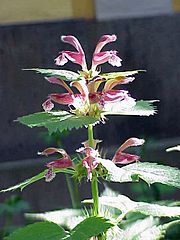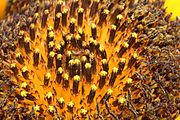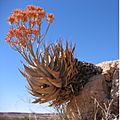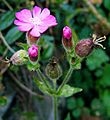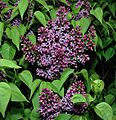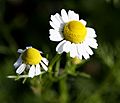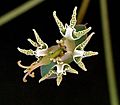Inflorescence facts for kids
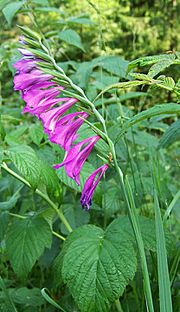
An inflorescence is like a special arrangement of flowers on a plant's stem. Instead of just one flower, it's often a group or cluster of many flowers growing together. Think of it as the plant's way of showing off its flowers in a specific pattern.
These flower clusters are super important because they are the parts of the plant that help it make seeds and reproduce. Sometimes, the flowers are packed so tightly that they look like one big flower. For example, what you see as a single daisy is actually hundreds of tiny flowers grouped together! This special kind of flower cluster is called a pseudanthium, which means "false flower."
Contents
Why Plants Have Inflorescences
Having flowers grouped together in an inflorescence offers many benefits for a plant, especially when it comes to making new seeds and growing more plants.
More Flowers, More Seeds
- Lots of Flowers: An inflorescence can have dozens or even hundreds of tiny flowers. This means the plant can produce many seeds or fruits from just one flowering stem. More seeds mean more chances for new plants to grow!
Helping Pollinators Find Flowers
- Easier to See: When flowers are clustered together, they become much more visible. Imagine a bright bunch of flowers compared to just one tiny bloom. This makes it easier for pollinating insects (like bees and butterflies) and birds to spot them.
- Better Pollination: With more visitors, there's a higher chance that pollen will be carried from one flower to another. This helps the plant make seeds and fruits.
Spreading Seeds Far and Wide
- Better Dispersal: Having the flowers and later the seeds at the top of a stem helps with dispersal. Whether it's the wind blowing seeds away or animals carrying fruits, being higher up gives them a better start to spread.
Related Topics
Images for kids
-
Amorphophallus titanum has the world's largest unbranched inflorescence. Photo of the plant in bloom in 2000 at Fairchild Tropical Botanic Garden in Miami, FL.
-
Bracteate inflorescence of Pedicularis verticillata.
-
Leafy-bracted inflorescence of Rhinanthus angustifolius.
-
Solanum lycopersicum (concaulescence)
-
Tilia cordata (recaulescence)
-
Plantago media (spike)
-
Dipsacus fullonum (head)
-
Alnus incana (ament)
-
Hypericum perforatum (bostryx)
-
Canna sp. (rhipidium)
-
Hebe albicans (heterothetic compound raceme)
-
Vitis vinifera (panicle)
-
Sambucus nigra (cymose corymb)
-
Achillea sp. (heads in a corymb)
-
Hedera helix (umbels in a panicle)
-
Matricaria chamomilla (calathid)
-
Triticum aestivum (compound spikes, "spikes")
-
Oryza sativa (spikes in a panicle, "panicle")
-
Ficus carica (syconium)
-
Coleus (false spike)
See also
 In Spanish: Inflorescencia para niños
In Spanish: Inflorescencia para niños


